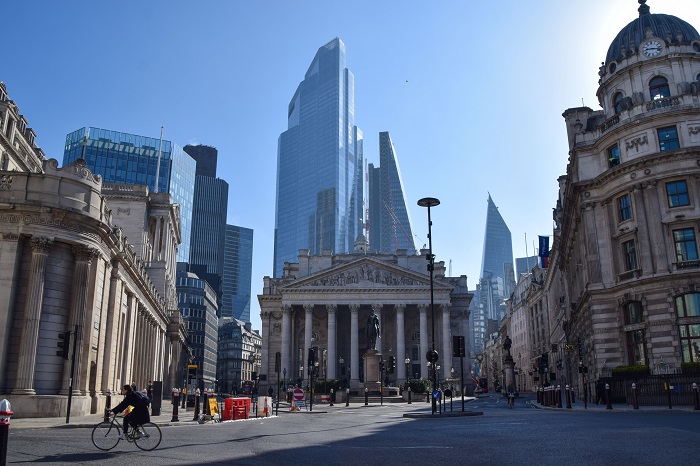European markets close lower
Paris — The major European markets closed roughly flat on Friday as the mood turned cautious with investors awaiting Fitch’s review of France’s sovereign rating.
Shares from automobile, banking and healthcare sectors were among the laggards, while mining stocks found fairly good support.
Expectations of a rate cut by the Federal Reserve next week aided sentiment. The European Central Bank, which left its rate unchanged on Thursday, has somewhat ruled out rate cuts, saying that growth risks are more balanced now.
The pan European Stoxx 600 ended down 0.09%. The U.K.’s FTSE 100 ended 0.15% down, due to a sell-off in the final hour. Germany’s DAX edged down 0.02%, while France’s CAC 40 crept up 0.02%. Switzerland’s SMI lost 0.8%.
Among other markets in Europe, Belgium, Poland and Russia closed on a weak note. Ireland, Portugal, Spain, Sweden and Turkiye edged down marginally.
Denmark, Greece and Netherlands ended higher. Iceland, Norway, Czech Republic and Finland settled flat.
In the UK market, Beazley, Babcock International, Centrica, Associated British Foods, BAE Systems, Glencore, United Utilities, Hiscox, Antofagasta, Relx, WPP, Legal & General, Pershing Square Holdings and Phoenix Group Holdings gained 1 to 3%.
JD Sports Fashion, Diageo, Fresnillo, Hikma Pharmaceuticals, Marks & Spencer, AstraZeneca, Smith & Nephew, Bunzl and BP closed down 1 to 2.2%.
In the German market, Hannover Rueck, Munich RE, E.ON and Rheinmetall posted strong gains.
Bayer, Heidelberg Materials, Commerzbank, Fresenius, Symrise and Merck ended notably lower.
In the French market, Thales climbed nearly 3%. Capgemini, Publicis Groupe, Unibail Rodamco, Schneider Electric, Dassault Systems and Kering also posted notable gains.
Edenred tumbled more than 6%. Stellantis ended down 2.2%, while Hermes International, EssilorLuxottica, Teleperformance and Carrefour lost 0.7 to 1%.
Data from Destatis showed Germany’s consumer price inflation increased as initially estimated in August to the highest level in five months.
The consumer price index rose 2.2% year-on-year following a 2% rise in each of the previous two months. That was in line with the flash data published on August 29.
Core inflation, which excludes food and energy prices, remained stable at 2.7%, as estimated.The harmonized index of consumer prices, or HICP, rose 2.1% year-on-year following a 1.8% increase in July, confirming the earlier estimate. On a month-on-month basis, the HICP edged up 0.1% after a 0.4% increase in July.
France’s consumer price inflation eased slightly as initially estimated in August, the latest data from the statistical office INSEE showed on Friday.
Data from INSEE showed consumer price inflationin France moderated to 0.9% in August from 1% in July, in line with the flash data published on August 29.
Inflation, based on the Harmonized Index of Consumer Prices, also slowed to 0.8% in August from 0.9% a month ago, as estimated.
Month-on-month, the consumer price index registered a 0.4% rise after July’s 0.2% increase. Likewise, HICP inflation accelerated to 0.5% from 0.3%. There was no change in figures compared to the preliminary estimate.
Data from the Office for National Statistics showed the UK’s real gross domestic product showed no growth in July, after rising 0.4% in June. The dominant services sector expanded 0.1% and construction grew 0.2%. Meanwhile, industrial production fell 0.9%.
On a yearly basis, GDP was up 1.4% in July, slightly slower than the economists’ forecast of 1.5%.
In the three months to July, real GDP advanced 0.2%, following a 0.3% rise in the three months to June.
Another report from the ONS showed that the visible trade deficit remained broadly unchanged in July. The trade gap totaled £23.68 billion ($32.1 billion) compared to £23.65 billion in June.
At the same time, the surplus on services dropped to £15.28 billion from £15.42 billion in the previous month. As a result, the total trade balance posted a deficit of £8.4 billion versus a £8.23 billion shortfall a month ago.
©2025 dpa GmbH. Distributed by Tribune Content Agency, LLC.
Notes From APS Radio News
As was true of the Federal Reserve, the European Central Bank followed a similar, if not identical, course.
Between the latter part of February 2020 and the summer of 2022, the US Federal Reserve added about $4.6 trillion to its holdings, for example, by purchasing hundreds of billions of dollars’ of Treasury bonds and corporate bonds.
For its part, the ECB added about 4.2 trillion Euros from the early part of March 2020 to November of 2022.
As of today, September 12, 2025, one Euro is worth about $1.17.
During lock-downs five years ago and beyond, shortages of various goods and services developed.
The combination of shortages and massive infusions of currency led to substantially higher rates of inflation.


